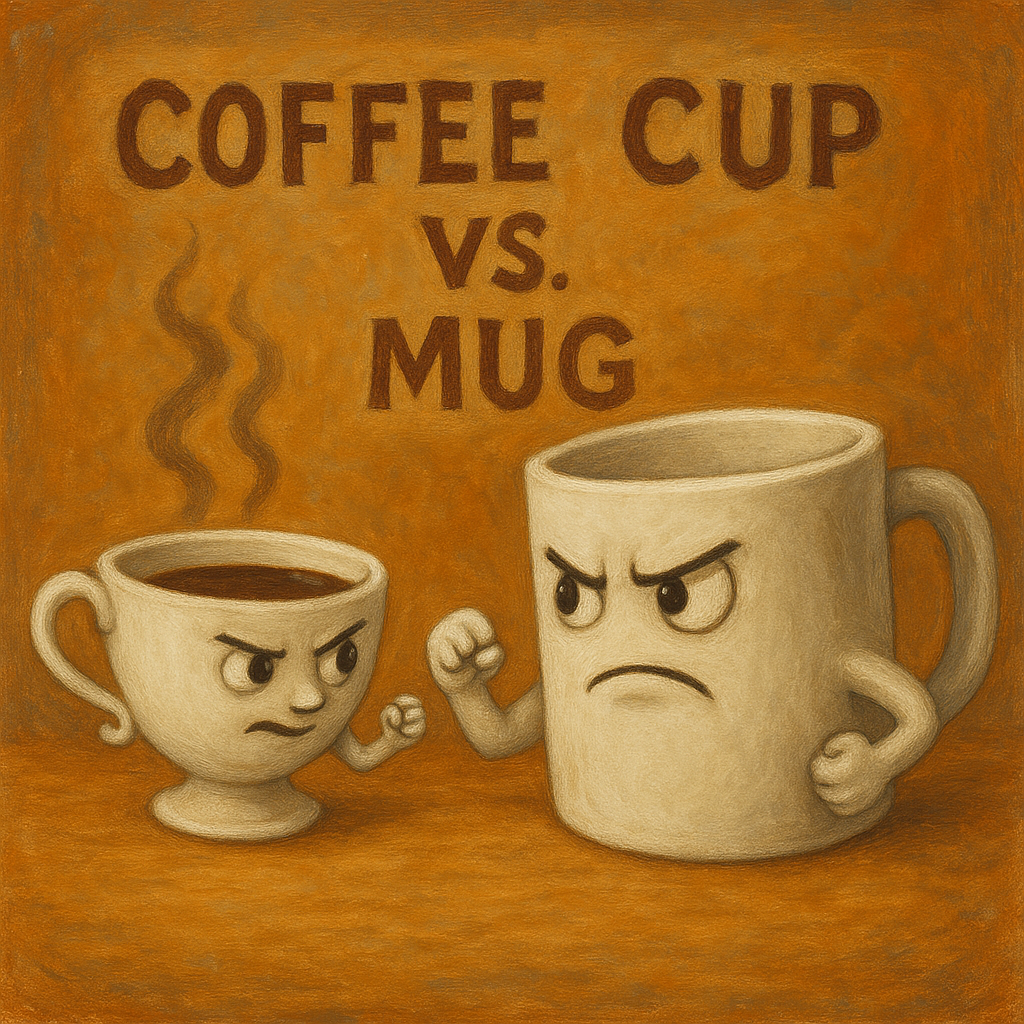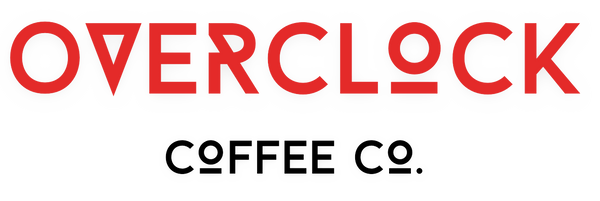
Coffee Cup vs. Mug: Why the Vessel You Choose Matters
A coffee cup might seem like just a container, but for coffee lovers, it's a core part of the ritual. From ceramic café cups to delicate porcelain demitasses, the type of coffee cup you use can influence flavor, temperature, and even how the moment feels.
At Overclock Coffee Co., we’re all about leveling up the coffee experience. So let’s break down what makes a coffee cup special, how it compares to a mug, and how to choose the right one for your next brew quest.
What Is a Coffee Cup, Technically?
Traditionally, a coffee cup refers to a vessel that:
- Holds 6–8 oz of liquid
- Is made of porcelain or ceramic
- Has thin walls and a small handle
- Is used for serving hot coffee in cafés or at home
It’s not the same as a mug, which is bulkier and designed for more casual sipping. A coffee cup offers a refined, intentional experience, making it ideal for savoring the nuances of specialty coffee.
According to the Journal of Sensory Studies, the thickness and shape of a cup can influence perceived sweetness, bitterness, and temperature of the coffee inside (Piqueras-Fiszman et al., 2012).
Coffee Cup vs. Mug vs. Demitasse
| Vessel Type | Capacity | Material | Best For |
|---|---|---|---|
| Coffee Cup | 6–8 oz | Porcelain, ceramic | Black coffee, medium roasts, morning focus |
| Coffee Mug | 10–16 oz | Ceramic, enamel, insulated | Flavored blends, long sessions, cozy vibes |
| Demitasse Cup | 2–3 oz | Porcelain, glass | Espresso, cortado, macchiato |
Why Choose a Coffee Cup Over a Mug?
Here’s what you gain with a traditional coffee cup:
☕ 1. Focused Flavor
Smaller volume means hotter sips and less dilution. You experience the roast as it’s meant to be tasted, especially with single-origin or medium roasts like our Expedition: Colombia.
💨 2. Enhanced Aroma
The shape of most coffee cups narrows at the top, helping concentrate aroma as you sip, key for appreciating notes like cherry, brown sugar, or spice.
🎯 3. A Ritualized Experience
Coffee cups slow you down. They feel intentional. And if you pair the right cup with the right roast, the whole experience feels elevated, even if you’re still in pajama pants.
Choose Your Cup. Choose Your Roast.
Let’s match the Overclock roast to your ideal coffee cup type:
| Coffee Cup Style | Roast Pairing | Why It Works |
|---|---|---|
| Classic Porcelain Cup | Expedition: Colombia | Clean and bright, ideal for mindful sipping |
| Modern Ceramic Cup | Dragon’s Breath Roast | Full-bodied, holds flavor even in wider bowls |
| Glass Coffee Cup | French Toast Capacitor | Watch the color layers while enjoying sweet aromas |
| Double-Wall Insulated | Zombie Espresso Antidote | Keeps intensity locked in for longer sessions |
Coffee Cups in Culture: A Symbol of Pause
Throughout Europe, Asia, and the Americas, the humble coffee cup is more than a vessel, it’s a signal. It tells your brain: pause, reset, focus.
In Scandinavian culture, the word “kaffekopp” represents more than caffeine, it represents connection, routine, and calm (Jørgensen, 2019).
We believe in coffee that supports that same energy, crafted, grounded, and immersive.
Final Thoughts: The Cup Is Part of the Story
Coffee isn’t just about caffeine. It’s about how you brew, how you sip, and what you sip from.
So whether you're upgrading your desk cup or diving deeper into flavor exploration, let your coffee cup reflect the experience you want to create, and let Overclock Coffee Co. be the roast that fills it.
🛒 Browse Our Coffee Adventures
📩 Sign up for mug + cup launches
References
- Piqueras-Fiszman, B., et al. (2012). The influence of the color and shape of a cup on consumers’ perception of a hot beverage. Journal of Sensory Studies. https://onlinelibrary.wiley.com/doi/abs/10.1111/j.1745-459X.2012.00386.x
- Jørgensen, M. (2019). Scandinavian Coffee Culture and the Ritual of the Kaffekopp. Nordic Life & Traditions.
- Fellow Products. (2021). How Your Coffee Cup Affects Taste. https://blog.fellowproducts.com
